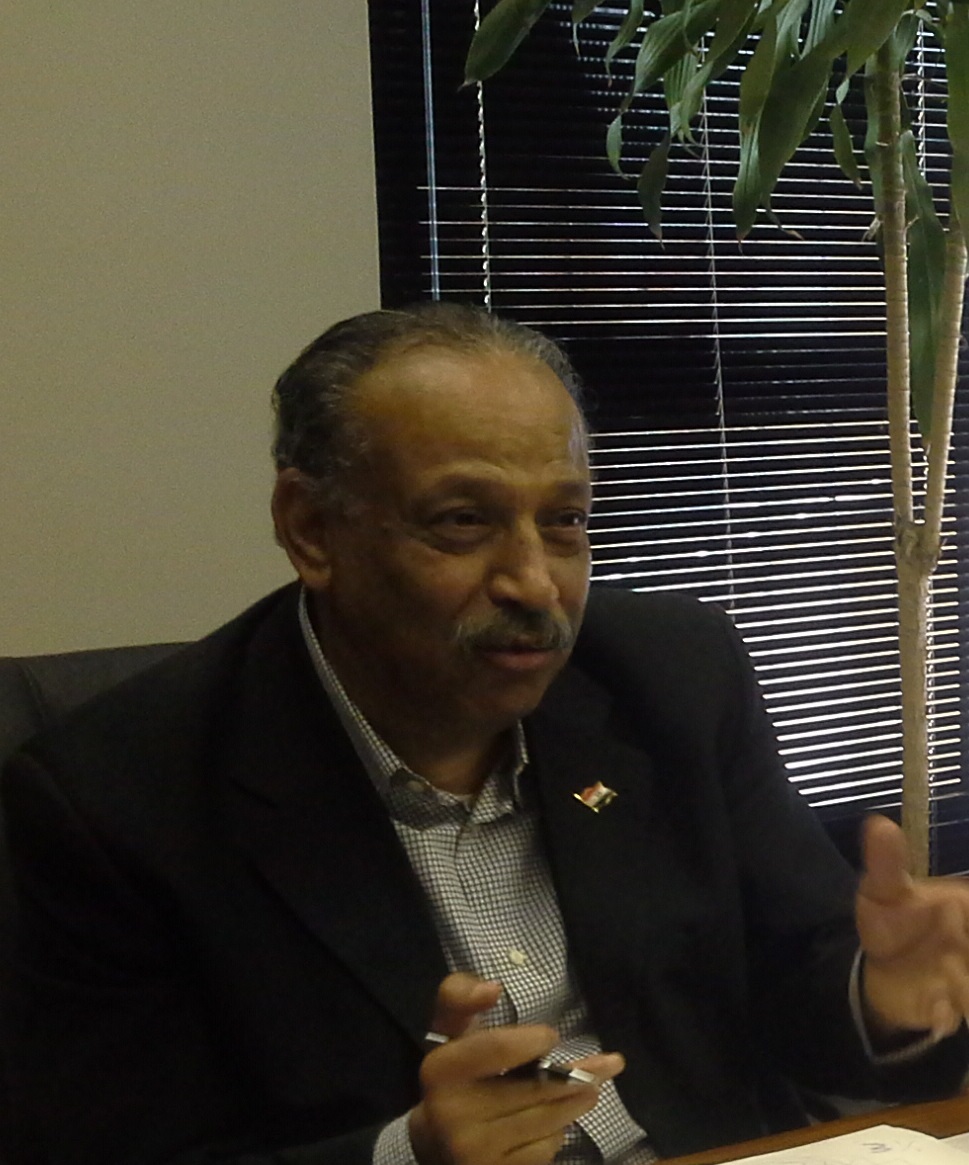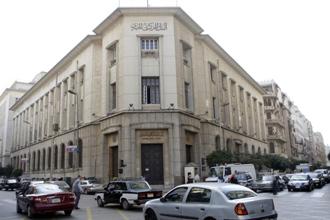Daily News Egypt sat with the Ministry of Planning, Monitoring, and Administrative Reform, Hala El-Said, to find out more details about the measures taken by the government in its economic reform programme and about her expectations of the future of the country’s economy. The minister asserted that she is optimistic about the Egyptian economy’s performance in the coming period and that Egypt is on the right track.
Your plan included new social protection measures for the families most affected by the reform. What are these measures?
One of the main objectives of the reform programme recently adopted by the Egyptian government is the effective reallocation of resources and the strengthening of social safety nets by targeting the poorest households and the most marginalised people.
Accordingly, the government has worked on reviewing the databases related to social programmes as well as developing them technologically to effectively reach targeted groups.
The Takaful and Karama programmes currently covers about 1.7 million families (more than 6 million Egyptians in total) from the country’s poorest and most vulnerable. The funds allocated to both programmes increased to EGP 2.5 billion on 29 May 2017.
It is worth noting that Takaful is an income support programme for families with children who are up to 18 years old, designed to produce human development outcomes. This entails commitments to families regarding child health and nutrition for children aged 0 to 6 years, school enrollment, and 80% attendance for children aged 6 to 18 years, and maternal care for pregnant and lactating mothers.
On the other hand, Karama is a social inclusion programme for persons who cannot work, specifically the elderly aged 65+ and persons with disabilities. The programme is designed to provide social protection and a decent life to the most vulnerable people.
The government is also expanding on Social Housing Projects to enable low-income and poor citizens purchase decent housing facilities. Based on the 2017/2018 plan, the government aims at establishing 250 thousand housing units.
You talked about the fact that population growth in Upper Egypt is one of the highest worldwide, which is killing development. What are your plans to control it? Are you enacting legislation to regulate that matter with parliament?
The “Sustainable Development Strategy (SDS): Egypt Vision 2030” emphasises the importance of human resource development and of the population’s contribution in generating income.
The two main important aspects of human development include the quality of health and education provided to citizens, and the distribution of the population across Egypt. In these regards, the government increased its investments in social services, namely health and education to boost human development, whereby government spending on health services increased by 15% in the 2017/2018 plan compared to the 2016/2017 plan and a 19% increase on education.
In tandem, mega projects serve the goal of achieving regional development with projects like Suez Canal Area development project, and 1.5 million acres development project. In addition, to the establishment of new cities to achieve the goal of increasing the inhabited areas by 11% by 2030.
In addition to that, the government is focusing in rural areas on awareness campaigns and is working on different incentives for small families.

(DNE Photo)
What are your tools to curb inflation, which is currently standing at 32.9%?
The government has already embarked on many measures, with the ultimate aim of curbing inflation. These work on both the demand and supply sides.
Regarding the supply side, the government aims in several ways to increase the supply of all commodities, especially basic ones. First, it aims at increasing the domestic production capacity of basic commodities, such as oil and sugar, by doubling the domestic production of oil to reach 624 thousand tonnes in
2017/2018 and by increasing the domestic production of sugar by 80 thousand tonnes to reach a total of slightly more than a million tonnes in 2017/2018.
Second, we aim at developing the storage system to increase the storage capacity by 9 million tonnes on an annual basis to maintain a safe strategic stock of basic grains and to reduce the wastage of these cereals by 20%.
Third, there is a plan to establish commercial and logistic areas and supply chains, as the Ministry of Supply aims to cooperate with the private sector at establishing 149 commercial chains spread across 4,470 acres in all governorates.
As for the demand side, the Central Bank of Egypt (CBE) increased interest rates by 3% in November 2016, and by 2% in May 2017. This should contribute to curbing the effects of inflation on the citizen, whereby the higher interest rates will help increase the saving rates of households.
You expected the CBE would keep interest rate unchanged, but it decided to raise it by 2%. How do you see the consequences of this measure on inflation and on debt payments in the budget? Why do you think the interest rate was hiked?
The interest rate was unchanged from November 2016 till May 2017. As part of the reform process, and as part of the inflation targeting process, the CBE increased the interest rate by 2%.
Economic policies, tools, and measures could differ from one economist to the other. As a previous member of the CBE’s Monetary Policy committee (MPC), we used to discuss different macro policies and their impact on the macroeconomy at large. Each economic policy has its costs and benefits, and we usually weigh the benefits against the costs, and, in the end, we all reach a consensus on the optimum tool that would best serve the country at that specific time.
The plan targets an unemployment rate of 11.3% in the next fiscal year. What is the size of investments needed for that. What is the average cost of employment in Egypt?
The plan targets an unemployment rate of 11.8% for the fiscal year 2017/2018 based on an estimate of targeted total investments reaching EGP 646bn. Accordingly, the average cost of employment is estimated to be EGP 1.2m. This cost differs among sectors. For example, the average cost of employment in the manufacturing sector is estimated to average EGP 370,000. Whereas, the average cost
of employment in the construction, education, wholesale and retail trade, and agriculture sectors is estimated to be EGP 1.8m, EGP 2.6m, EGP 700,000, EGP, and EGP 633,000 respectively.
How will you stimulate saving? And what are the new savings vessels expected to be offered? Are we facing weak saving rates or negative saving, as the state finances the budget deficit with citizens’ savings?
The saving rate is weak, reaching 5.8% in 2015/2016, compared to an investment rate of 15%—hence, a saving gap of 9.2%. In the 2017/2018 plan, a target of 15.9% for investment rate is set, with a 7.1% savings rate. These targets are to be reached through the government’s reform programme, including the rationing of government expenditure, financial inclusion policies, and boosting economic growth, all of which aim to raise people’s income. The increase in interest rates also contributes to raising savings. The MPC decision, which sets many measures, will promote financial inclusion and hence raise saving rates.
What are your tools and financial allocations to raise the standard of living of people living in slums, disadvantaged, and dangerous areas?
The government has targets to eliminate insecure areas in 2030 and reach less than 5% of the informal settlements in urban or rural areas. Between 2016 and 2018, the government intends to develop 24 squatter settlements in six governorates, with a total of about 29,000 housing units. In 2017/2018, the government aims at developing 87 areas in 16 governorates, which includes about 57,000 housing units, at a total cost of EGP 10bn.
You talk about accelerating the pace of implementation of government investments, while we are still suffering weak implementation rates in the current fiscal year budget. What are the rates of implementation now?
The Ministry of planning is aiming at modernising the planning and monitoring process. This includes a new planning law; an automated planning and monitoring system used by all ministries, different entities, and all governorates applying for investment funding; new planning manuals; and training. In addition, we are giving priorities to the projects that are about to finish and to those that are providing services to the citizens and aiming at improving their lives.
Why should the public sector not go hand-in-hand with the private sector to lead development and growth by stimulating the private sector and restructure the public one?
The “Government Programme for the years 2016-2018” targets the development of the public sector through an ambitious plan to restructure companies, nominate new boards for the companies, adopt a monitoring system that includes performance indicators and Z-scores, and boost the implementation of current projects that started years ago. The government is prioritising the restructuring of textile companies.
We still suffer from the lack of competition and centralization, besides slowdown of the procedures for starting economic activity. How do we go beyond that to attract investment?
The government has taken several steps towards improving the business climate and attracting investment. The most important achievement is the New Investment Law, which the parliament has recently ratified. The New Investment Law provides incentives and aims at simplifying procedures. The government continues to move ahead on the economic reform agenda, including a new system for land allocation, finishing the Unified Corporation Law and activating the decisions of the Supreme Council for Investment, and creating a new entity that will consolidate all agencies responsible for developing short and medium enterprises (SMEs). In addition, it should be noted that the bold reform measures adopted by the government contribute to a more stable macroeconomic environment.
Do we have a plan that identifies the required sectoral and geographical incentives and link them to the areas in most need for development, taking into account the rate of contribution of each geographic region to GDP?
The geographical dimension of development in Egypt is mainly considered in the annual socioeconomic development plan, which aims to reduce the geographical gaps by allocating more public investments especially in the most deprived areas. In the 2017/018 sustainable development, more than EGP 10 billion are to be allocated to improve the infrastructure and public utilities in 22 governorates, in addition to EGP 2.5m that will be allocated to provide municipality services in the poorest governorates. A new vision for the development of governorates is currently prepared to empower local units to provide more efficient services to citizens.
How does the Minister of Planning explain the high interest rates on government debt instruments even though it is an investment with guaranteed return without risk?
The point of the issuing debt instruments with high interest rate is to improve competitiveness of the Egyptian economy in the world market and attracting foreign investments, and to be compatible with the interest rates on the local level. Egypt has raised $4bn in the first public bond offering in January 2017. In addition, it should be noted that Egypt suffers from a financing gap that is financed through diversified
tools, including attracting foreign direct investments (FDIs) and issuing debt instruments.
Administrative and institutional reform is a necessity. We will not attract investment, and we will not achieve development without them. Are we about to see renovation and restructuring within the government apparatus and the use of private sector leaders? How will you deal with the maximum wage?
Yes, we are about to see renovation and restructure within the government apparatus through several mechanisms, such as employing associates and experts from the private sector in the various ministries. In addition, using private sector executives as consultants in various fields, of course we are currently guided by maximum wages. We are starting outsourcing of several government services from the private sector, especially in the field of information technology and software application.
What are the preliminary indicators for the fourth quarter of the current fiscal year in terms of growth, unemployment, inflation, and foreign direct investment?
In a few weeks, the indicators for Q3 FY 201/17 and the estimates for Q4 will be issued. However, it is estimated that the growth rate for FY 2016/17 will be at 4%, and unemployment rate will be less than 12%.




